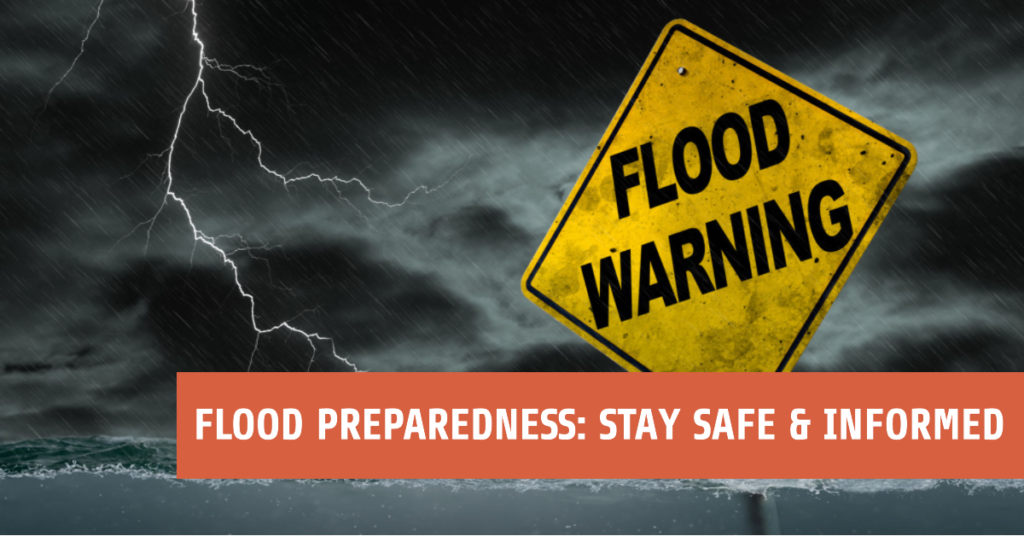
Floods are among the most common and devastating natural disasters. They can cause significant damage to homes, infrastructure, and even result in loss of life. Therefore, understanding the risks and taking proper precautions to prepare for floods is crucial. In this article, we will explore the different types of floods, common causes, and how to prepare for and stay safe during a flood. Make sure to check out our Essential Go Bag List for a comprehensive guide on what to include in your emergency kit.
Understanding Flood Risks
Types of Floods
There are three main types of floods: flash floods, river floods, and coastal floods.
- Flash floods occur suddenly, often due to intense rainfall, dam failures, or ice melts. They can develop within minutes or hours of the causative event, and typically subside quickly.
- River floods result from prolonged rainfall or rapid snowmelt, causing rivers to overflow their banks. River floods tend to last longer than flash floods and can affect large areas.
- Coastal floods are caused by storm surges, high tides, or tsunamis. They typically affect coastal areas and can lead to severe erosion, infrastructure damage, and loss of life.
Common Causes of Floods
Some common causes of floods include:
- Heavy or prolonged rainfall
- Rapid snowmelt
- Ice jams
- Dam or levee failures
- Storm surges from hurricanes or cyclones
- Tsunamis caused by underwater earthquakes or volcanic eruptions
Understanding the causes of floods can help you identify potential risks in your area and take appropriate action to prepare.
Flood-Prone Areas and Regions
Some areas are more susceptible to flooding than others due to their geography, climate, or proximity to water sources. Common flood-prone areas include:
- Low-lying areas near rivers or coastlines
- Urban areas with poor drainage systems
- Regions with a history of flooding or prone to severe weather events
Keep in mind that floods can occur anywhere, so it’s essential to be aware of the risks and take appropriate precautions.
Preparing for a Flood
Creating a Flood Emergency Plan
Having an emergency plan in place is crucial for staying safe during a flood. Consider the following steps when creating your plan:
- Evacuation routes: Identify safe routes to higher ground, and practice evacuating with your family. Make sure everyone knows the plan and can execute it quickly if needed.
- Family communication: Establish a communication plan with your family members, including an out-of-town contact. This will help you stay connected if you become separated during an emergency.
- Important documents and contacts: Gather essential documents, such as identification, insurance policies, and medical records, and store them in a waterproof container. Compile a list of important contacts, including emergency services, medical providers, and utility companies.
Assembling a Flood-Specific Go Bag
In addition to your basic go bag, consider assembling a flood-specific kit containing essential items for flood emergencies. Some items to consider include:
- Waterproof bags or containers for essential documents and electronics
- A battery-powered or hand-crank radio for receiving weather updates and emergency alerts
- Extra clothing, including rain gear and waterproof footwear
- Insect repellent and sunscreen
- A first aid kit with any necessary prescription medications
Flood Safety Measures and Tips
During a Flood
- Stay informed: Monitor local news, weather updates, and emergency alerts on your battery-powered or hand-crank radio. Stay aware of current conditions and potential risks.
- Evacuate if necessary: Follow your evacuation plan and leave the area if advised by local authorities. Do not wait for the situation to worsen, as roads may become impassable.
- Avoid floodwaters: Do not walk, swim, or drive through floodwaters. Moving water can be deceptively strong and may contain debris, chemicals, or other hazards.
- Turn off utilities: Shut off electricity, gas, and water at the main switches or valves if you have time and it’s safe to do so. This can help prevent fires, explosions, or water damage.
After a Flood
- Wait for the all-clear: Do not return home until authorities have declared the area safe. Floodwaters may have caused damage to roads, bridges, or buildings, making them dangerous.
- Inspect for damage: Carefully inspect your home for structural damage and potential hazards, such as gas leaks, electrical issues, or contaminated water. If you suspect any issues, contact professionals to assess the situation.
- Clean and disinfect: Thoroughly clean and disinfect your home, as floodwaters can carry contaminants and promote mold growth. Wear protective gear, such as gloves and masks, during the cleanup process.
- Document the damage: Take photos and make detailed notes of any flood-related damage for insurance purposes. Contact your insurance company as soon as possible to start the claims process.
Staying Informed and Connected
Sign Up for Emergency Alerts
Many communities offer emergency alert systems to keep residents informed during disasters. Sign up for alerts from your local government or weather service to receive notifications about flood warnings, evacuations, or other essential information.
Utilize Social Media and Mobile Apps
Social media and mobile apps can provide real-time updates and information during a flood. Follow local news outlets, emergency management agencies, and weather services on social media platforms like Twitter and Facebook for up-to-date information. Consider downloading mobile apps for weather updates and emergency alerts.
Community Involvement and Preparedness
Participate in Community Preparedness Activities
Getting involved in community preparedness activities can help you and your neighbors stay safe during a flood. Attend local preparedness workshops or events, join a community emergency response team, or volunteer with organizations focused on disaster preparedness and response.
Share Your Knowledge
Help others in your community become better prepared for floods by sharing your knowledge and experiences. Teach family members, friends, and neighbors about flood risks, emergency plans, and go bag essentials. Encourage them to visit our Essential Go Bag List for a comprehensive guide on what to include in their emergency kit.
By understanding flood risks, preparing for emergencies, and staying informed during a flood, you can help protect yourself, your family, and your community. Don’t forget to check out our other articles for more information on emergency preparedness and basic survival skills.
